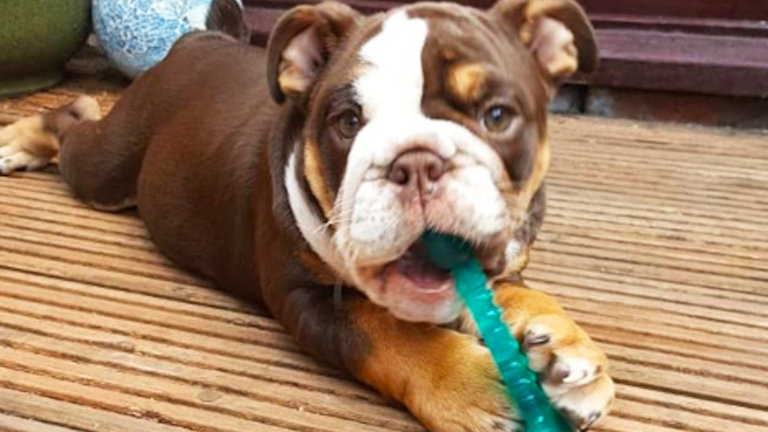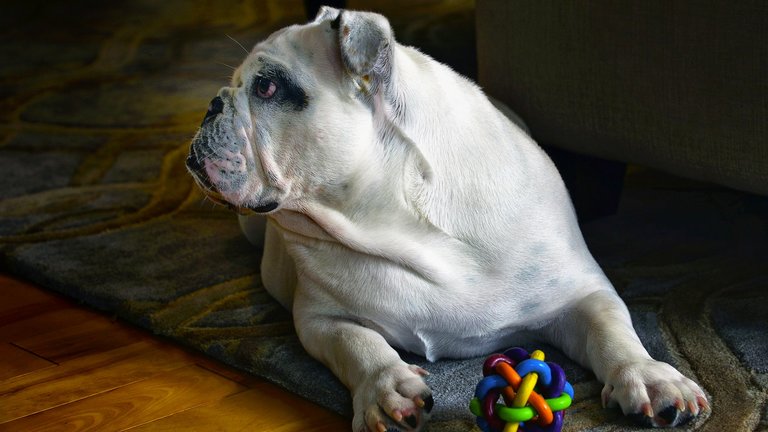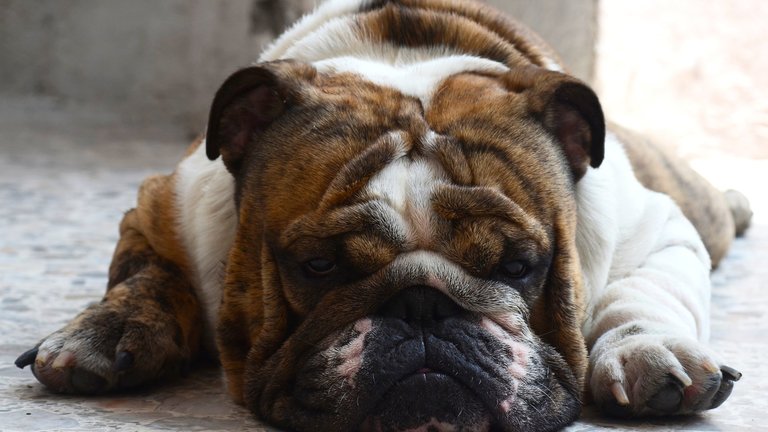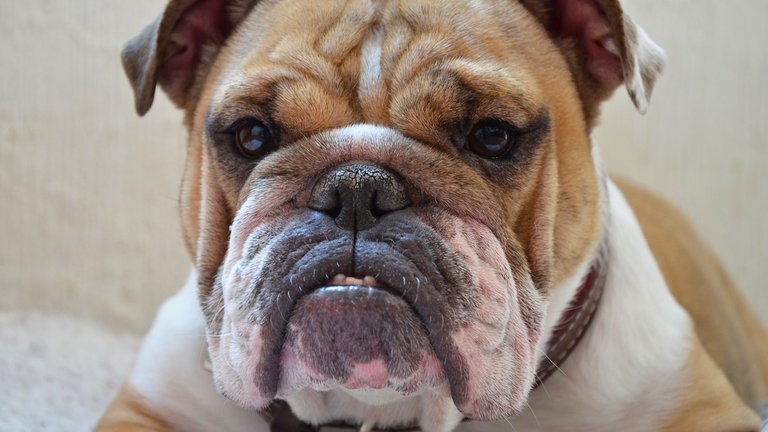The Bulldog
Courageous, tenacious, calm.
The Bulldog is a British national icon, symbolizing strength, courage and tenacity sometimes referred to as the ‘Bulldog spirit’. These qualities, along with its willingness to fight larger animals, appealed to the British population during the first world war, and the Bulldog became the poster child for WWI propaganda.
The Bulldog’s stout, muscular stature, wrinkled skin, undershot jaw and hanging chops are unmistakable. They make loyal companions and adapt well to the city or country life.

The Bulldog is sometimes called the English Bulldog or the British Bulldog to distinguish him from the taller American Bulldog and smaller French Bulldog.
At 40 to 50 pounds (18 – 22 kg) they’re heavier than they look and have a relatively short lifespan of 8 – 10 years. You can maximize his lifespan with a healthy diet.
Famous Bulldogs
Bulldogs are popular with celebrities. Adam Sandler has Meatball, Brad Pitt has Jacques, Miley Cyrus has Ziggy, Pink has Elvis, Ozzy Osboure had Lola and Ashley Simpson has Hemingway.
Bulldogs are not known for the athletic prowess, but they do have a natural aptitude for skateboarding, kicking off with one foot and leaning to turn corners. Some of the best skateboarding Bulldogs will do tricks and turns. Tyson and the late Tillman are perhaps the most famous skateboarding Bulldogs.
Positive Traits of the Bulldog
- A Bulldog’s coat is short, smooth, glossy and easy to care for.
- The Bulldog is easygoing and loyal.
- He doesn’t need much exercise.
- He seldom barks.

Negative Traits of the Bulldog
- The Bulldog’s short snout can make breathing difficult, especially during hot humid days. If a Bulldog’s breathing is labored during hot days, put the air-conditioner on for him. Read more about Brachycephalic dog breed risks.
- Though their fur is short, they shed.
- The wrinkles on a Bulldog’s face can trap food and moisture so when you brush him wipe his wrinkles, too.
- Bulldogs can’t swim. If he falls into a pool he will drown. The Bulldog carries most of his weight around his head, so stairs and swimming pools can be a hazard for him.
- They can be stubborn.
- The Bulldog can be food possessive and should not be fed around small children or other pets.
- Bulldogs drool.
- Bulldogs are prone to dystocia (difficult births) due to the size of their head and shoulders. Emergency caesarians are common.
- Bulldogs often cost more than your average dog in vet fees over the years.
- His snout means he will snore, grunt, snuffle and pass gas. They can’t help it. The short snout means they gulp air when they eat, and what goes in must come out one way or another. Some commercial pet foods can make this worse due to their high fiber levels. This high protein home made dog food will help.
Grooming
- Trim his nails every two weeks
- Brush him with a soft brush 2 – 3 times per week, wiping in the wrinkles of his face and snout.
- Keep his ears clean with cotton balls and ear cleaning fluid. Start young and keep some healthy dog treats handy so the Bulldog will associate the experience with something positive.

Exercise for the Bulldog
Bulldogs are not as demanding as the more active dog breeds, such as Labradors, but he does need regular moderate exercise, along with a careful diet, to stay in shape.
Training the Bulldog
The Bulldog is known for being stubborn, but they do have a sweet nature and persistent training will pay off.
Treats can be an important aid in training, but giving your Bulldog too many will make him fat. Choose healthy low-calorie treats to avoid him becoming overweight, and use them sparingly.
Puppy training classes will help you to curb any undesirable behaviors that some Bulldogs have a tendency to develop. Bulldogs love to chew and play tug-o-war, so it is important to teach the young Bulldog what he can and can’t chew, and to release what’s in his mouth on command. To prevent aggressive food protection, get him used to having food removed from his bowl.

Bulldog Health Issues
Bulldogs, like many purebreds, are predisposed to certain health issues including hip, heart and skin problems.
As a brachycephalic (short-nosed breed), Bulldogs are predisposed to breathing difficulties, especially during exercise and when they become over heated. Breathing troubles are also exaggerated if dogs become overweight.
Responsible registered breeders of Bulldogs (such as Kennel Club Assured Breeders) account for these issues by supplying the buyer with information on the pup’s parents. Whenever possible you should always meet the pup’s parents so you can see for yourself that there are no exaggerated features, such as an overly short snout, that might cause health problems.
Bulldogs are prone to heat stroke and owners should be vigilant about providing shade and water on a hot day. Air conditioning indoors and ice in his water can help. Never leave any dog in an enclosed car in the sun, even in mild weather.
If a Bulldog is breathing too hard and his tongue hangs out unusually far and takes on a bluish color rather than its usual pink, he is overheated. Immediately soak him in cool water and call your vet.

History of the Bulldog
The English Bulldog was bred for bull baiting, a cruel form of amusement in the Middle Ages in which a dog was pitted against a bull or a bear. A lot of money changed hands in wagers, and as bull baiting grew in popularity, dogs were selected and bred for courage, power and tenacity. A Bulldog will hold on to the bitter end. #Bulldog
Keep your Bulldog active with our free WAGSTA walkies, weight and wellness tracker! Join the pack and create the optimal healthy lifestyle for your dog!
Create the optimal healthy lifestyle for your dog with WAGSTA walkies, weight and wellness. Learn more now.
